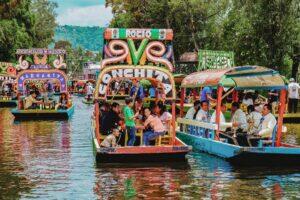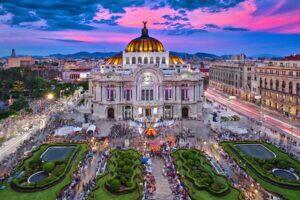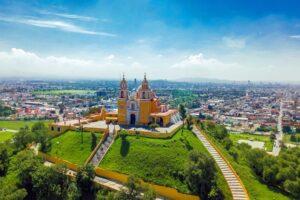Fodor's Expert Review Palacio Nacional
The center of government in Mexico City since the time of the Aztecs, the National Palace's long, volcanic stone facade is both a symbol of political power and a staging ground for acts of resistance. Construction of the national palace was initiated by Cortés on the site of Moctezuma II's royal residence and remodeled by the viceroys. Its current form dates from 1693, although its third floor was added in 1926. The entire building is worth a look, even just for the novel experience of wandering freely through an influential nation's primary seat of government, but most visitors come for Diego Rivera's sweeping murals on the second floor of the main courtyard. For more than 20 years, starting in 1929, Rivera and his assistants mounted scaffolds day and night, perfecting techniques adapted from Renaissance Italy's frescoes. The result is nearly 1,200 square feet of vividly painted wall space, titled Epica del Pueblo Mexicano en su Lucha por la Libertad y la Independencia (Epic... READ MORE
The center of government in Mexico City since the time of the Aztecs, the National Palace's long, volcanic stone facade is both a symbol of political power and a staging ground for acts of resistance. Construction of the national palace was initiated by Cortés on the site of Moctezuma II's royal residence and remodeled by the viceroys. Its current form dates from 1693, although its third floor was added in 1926. The entire building is worth a look, even just for the novel experience of wandering freely through an influential nation's primary seat of government, but most visitors come for Diego Rivera's sweeping murals on the second floor of the main courtyard. For more than 20 years, starting in 1929, Rivera and his assistants mounted scaffolds day and night, perfecting techniques adapted from Renaissance Italy's frescoes. The result is nearly 1,200 square feet of vividly painted wall space, titled Epica del Pueblo Mexicano en su Lucha por la Libertad y la Independencia (Epic of the Mexican People in Their Struggle for Freedom and Independence). The paintings represent two millennia of Mexican history, filtered through Rivera's imagination; only a few vignettes acknowledge the more violent elements of some pre-Hispanic societies. As you walk around, you'll pass images of the savagery of the conquest and the hypocrisy of the Spanish priests, the noble independence movement, and the bloody revolution. Marx appears amid scenes of class struggle, toiling workers, industrialization (which Rivera idealized), bourgeois decadence, and nuclear holocaust. These are among Rivera's finest works—as well as the most accessible and probably the most visited. The palace also houses a minor museum that focuses on 19th-century president Benito Juárez and the Mexican Congress. Other exhibition spaces house rotating, and sometimes quite extraordinary, exhibitions, typically advertised on a large billboard in the Zócalo.
The liberty bell rung by Padre Hidalgo to proclaim independence in 1810 hangs high on the central facade. It chimes every eve of September 16, while from the balcony the president repeats the historic shout of independence to throngs of citizens below. Though remarkably accessible, the Palacio Nacional can be closed with little notice for government functions. In order to enter, you might have to leave an ID at the entrance; it's smart to bring yours just in case.
READ LESS








